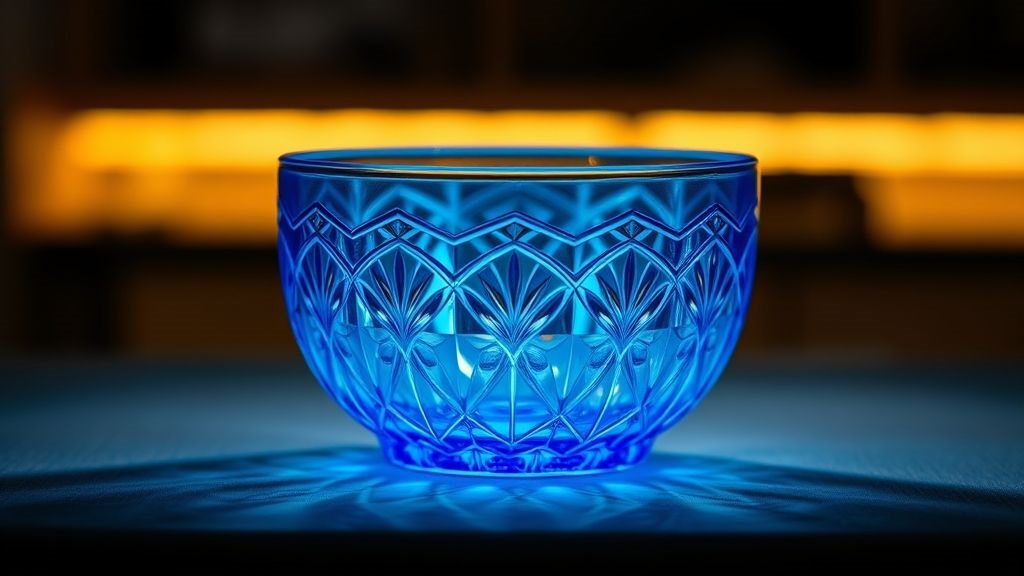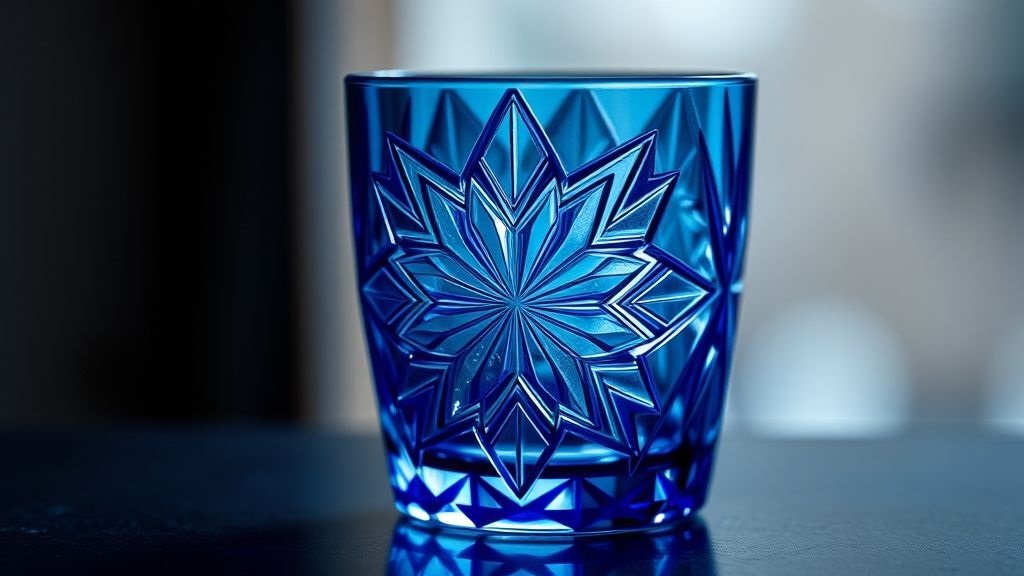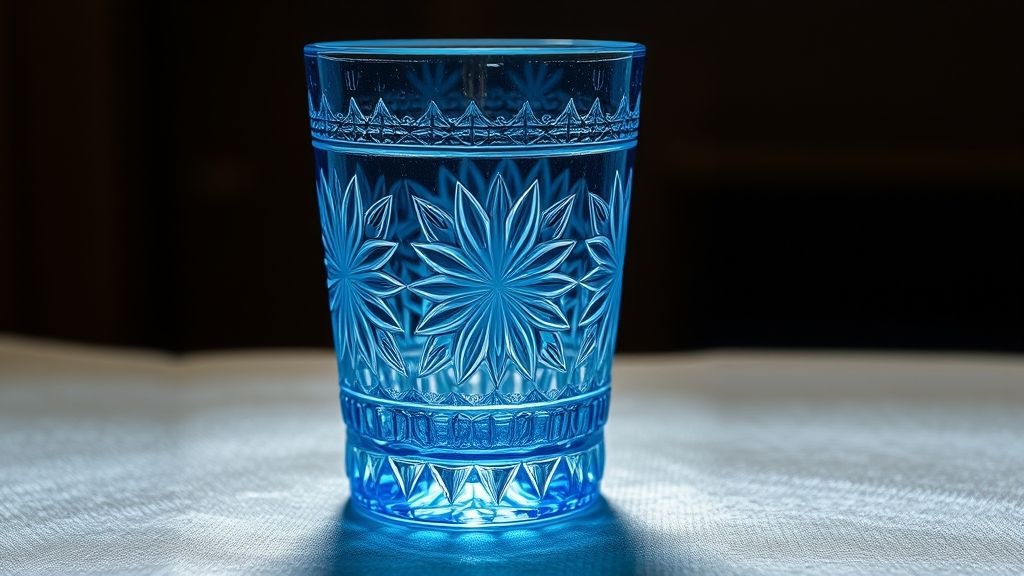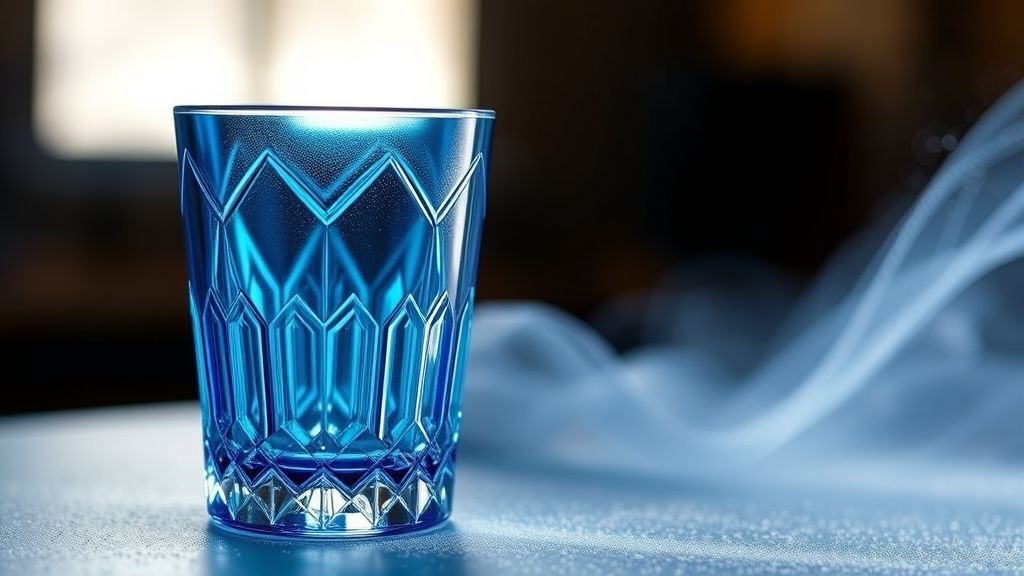There’s something oddly magnetic about glass especially when it wears the color of a summer sky. Cut blue glass and sandblast work is not merely a matter of shaping or scratching a surface. It’s the poetry of patience, where the artisan coaxes beauty out of fragility. One wrong move, one impatient breath, and the whole thing collapses into shards. But when done right, it shines like frozen water calm, cold, and eternal.
The blue glass, deep as the ocean and soft as twilight, carries stories of both fire and air. Fire shapes it; air cools it. Then comes the sandblast an ancient whisper of wind and grit. Together, they form a marriage of art and endurance. It’s not just glass anymore; it’s memory trapped in a translucent dream.
The Timeless Process of Cut Blue Glass

To understand the craft, one must start with the glass itself. Blue glass is born from molten silica mixed with cobalt oxide a union that gives it that unmistakable hue, rich and steady, like a sapphire caught in sunlight. When cooled and solid, the artist takes up their tools: diamond blades, wheels, and an unshakable hand.
Cutting blue glass isn’t like carving wood or shaping stone. It’s more like negotiation. The craftsman speaks to the glass, gently persuading it to reveal its inner brilliance. Each cut redirects light, bends it, and sometimes traps it. The edge of a cut blue glass panel gleams like ice lit from within. It doesn’t shout for attention; it quietly commands it.
This delicate ritual of cutting is both science and soul. Every movement must be deliberate, for glass has no forgiveness. Yet in its resistance lies its charm. It reminds you that beauty never comes easy it demands respect.
Sandblast Techniques on Blue Glass Surfaces

Now enters the sandblast, a method as old as dust itself. Where cutting defines, sandblasting refines. The artist directs a storm of fine grit usually aluminum oxide or silica against the glass surface. The pressure wears away the gloss, leaving behind a soft matte finish that feels like velvet to the touch.
In the world of cut blue glass and sandblast, this technique transforms mere transparency into mystery. It’s not what you see, but what you almost see that matters. The sandblasted parts scatter light, creating a ghostly contrast against the untouched blue. Some artists use stencils to guide the blast, shaping patterns, symbols, or even whole landscapes across the glass.
It’s like watching the sea meet the shore the wild energy of sand and wind shaping something unyielding. The final result carries both movement and stillness, like the calm that follows a storm.
Cut Blue Glass and Sandblast in Modern Design

Today, the art of cut blue glass and sandblast finds its place in both grand halls and humble homes. Architects use it for windows that catch morning light and scatter it like rainbows on the floor. Interior designers see it as a statement of elegance panels, partitions, and tabletops that shift mood with every hour of the day.
But beyond its beauty, there’s practicality. Sandblasted glass reduces glare and diffuses harsh light, making rooms gentler on the eyes. Cut edges add dimension, turning an ordinary pane into a living sculpture. When the two techniques meet, they breathe soul into modern design.
Imagine a hotel lobby where blue glass walls shimmer faintly under golden lamps, their surfaces etched with subtle waves. Or a kitchen backsplash where sunlight filters through sandblasted motifs of leaves and wind. These are not mere decorations they are silent witnesses to craftsmanship, a reminder that even glass can hold warmth.
The Emotional Language of Blue and Texture

Color and texture speak their own dialect. Blue is calm, contemplative, eternal. It’s the color of the deep sea, of distance, of thought. When paired with the grainy whisper of sandblast, it becomes something more an invitation to pause. The matte finish softens the boldness of blue, turning brilliance into depth.
There’s a certain melancholy in cut blue glass and sandblast work, the kind that lives inside quiet beauty. It’s the same feeling you get when watching dusk fall over water. There’s light, but it’s fading; there’s reflection, but it’s blurred. And yet, it’s all the more precious because of that fleeting quality.
How Cut Blue Glass and Sandblast Reflect Human Nature
This art, in its essence, mirrors the human spirit. We are all glass at heart transparent in moments, fragile in others. We carry color in our souls, shaped by heat, marked by experience. The sandblast of life leaves its patterns some rough, some tender but all meaningful.
In the end, what stands is not perfection, but resilience. Just as cut blue glass and sandblast reveal beauty through contrast, so too does our own story glow brighter against adversity. The marks we bear become our texture; the light we reflect defines our worth.
The Eternal Appeal of Handcrafted Glass
In a world where machines hum and precision is measured in decimals, there’s still something sacred about the human touch. A piece of hand cut, sandblasted blue glass carries imperfections the tiny tremor of a hand, a hairline unevenness along a curve. But these are not flaws; they are fingerprints of authenticity.
Collectors and connoisseurs know this truth well. They see beyond symmetry. They look for the whisper of the maker, the story hidden in each swirl and grain. The charm of cut blue glass and sandblast work lies in its refusal to be mass produced. Each creation is unique a conversation between fire, air, and will.
The Future of Cut Blue Glass and Sandblast
Though ancient in method, the craft continues to evolve. Artists experiment with layered colors, combining sandblasting with engraving, painting, and even digital etching. The fusion of tradition and innovation ensures that this art form remains alive, vibrant, and surprising.
In the hands of a skilled artisan, cut blue glass and sandblast transcend utility. They become emotion crystallized a fragment of sky, a sliver of ocean, a moment caught between light and shadow.
And perhaps that’s the true heart of the craft: the defiance of time. Long after the maker is gone, the glass remains, holding the memory of creation, gleaming quietly under the patient gaze of the sun.
A Dance Between Fragility and Strength
Cut blue glass and sandblast work is not just an art; it’s a dialogue between fragility and strength, light and darkness, stillness and motion. It reminds us that even the most delicate materials can bear great stories.
In every etched swirl and polished edge lies the echo of human persistence. Glass may break, but beauty like light finds its way through every crack.